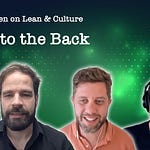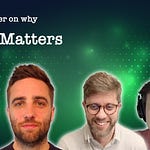In this new podcast David had an insightful conversation with Klaas Dobbelaere, IIoT Connectivity Director at Electrolux (also known in some markets under their brands AEG or Frigidaire). Klaas shared valuable insights into the world of Industrial Internet of Things (IIoT) and how Electrolux is embracing IT/OT convergence to drive digital transformation in its manufacturing operations.
The Electrolux Transformation Journey
Klaas started by highlighting Electrolux's digital transformation efforts across its global footprint. As a leading household appliance manufacturer, Electrolux has to innovate continuously while ensuring its operations remain efficient and sustainable. The company's focus on leveraging IIoT for seamless connectivity across its operations helps optimize everything from energy consumption to predictive maintenance.

One of the key takeaways from our conversation was the importance of actionable data. For Klaas, collecting data from machines, sensors, and production lines is not enough—what matters is translating that data into insights that can inform better decisions and improve operational efficiency. He stressed the significance of finding the right balance between cutting-edge technologies and the practical, everyday needs of the plant floor.
Building Bridges Between IT and OT
Historically, IT and OT have operated in silos—IT managing information systems, while OT focuses on controlling physical operations. This divide has often caused friction in industrial environments, but as Klaas explained, the boundaries are blurring rapidly.

At Electrolux, IT/OT integration is a critical driver for innovation. By bridging the gap, teams can create a more collaborative environment where both the data insights from IT systems and the operational know-how from OT experts can come together to drive better outcomes. One concrete example Klaas gave was their efforts to deploy real-time monitoring systems that allow engineers to analyze machine performance instantly, identifying issues before they lead to costly downtimes.
Navigating the Challenges
Of course, IT/OT convergence isn’t without its challenges. Klaas was candid about the growing pains Electrolux faced, including technical hurdles like legacy equipment integration and organizational barriers that often slow down progress. However, he emphasized the need for patience and strong leadership to guide teams through these transitions.
One challenge particularly close to Klaas' heart is the cultural shift that needs to occur. At Electrolux, as in many manufacturing companies, there's a deeply ingrained culture of precision, safety, and reliability. While these are strengths in traditional operations, they can slow down the adoption of new, agile technologies. For Klaas, the solution lies in fostering a mindset of continuous learning among employees and providing the right training to bridge the knowledge gap between IT and OT.
Future-Proofing Manufacturing with IIoT
Looking ahead, Klaas believes that the future of manufacturing lies in smart, connected ecosystems. He painted a vision of a factory where every machine, sensor, and operator is linked in a vast network, feeding real-time data into AI-driven systems. These systems will not only make predictions but will autonomously make decisions to optimize production processes.
However, he also issued a word of caution: “Technology can only take you so far. Without the right people and processes in place, even the most advanced systems will fall short.” His message was clear—people remain the most important asset in any digital transformation.
Conclusion
Our conversation with Klaas Dobbelaere underscores the critical role IT/OT convergence plays in the modern manufacturing landscape. For companies like Electrolux, harnessing the power of IIoT and data-driven insights is key to staying competitive and driving innovation. But success doesn’t come easy—it requires breaking down silos, fostering a culture of collaboration, and being willing to embrace change.













Share this post